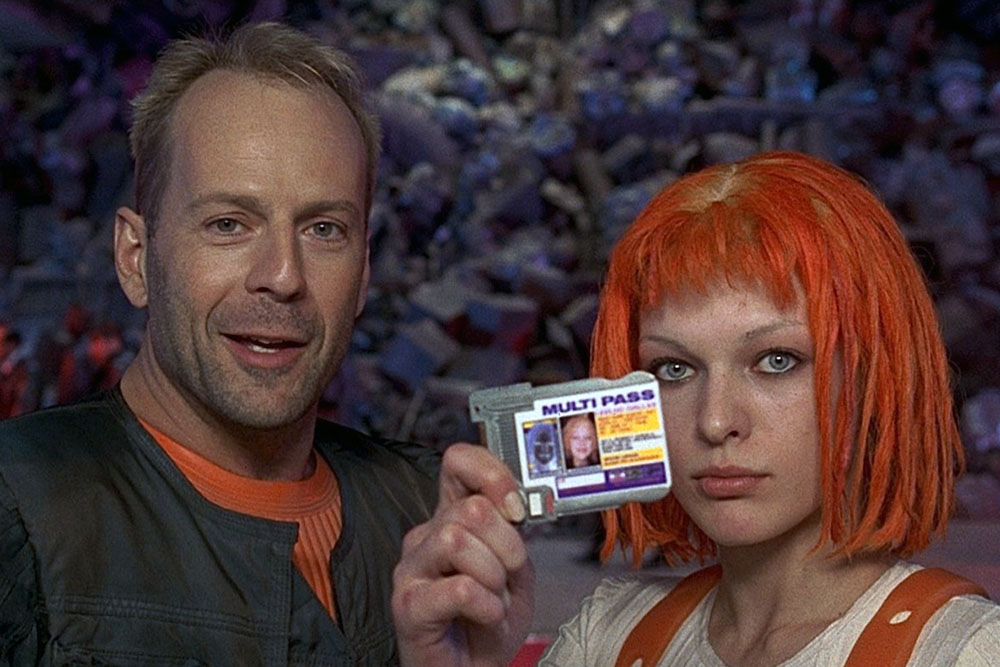
In hindsight, it’s weird that Sony greenlit a deliciously nerdy hard sci-fi film with a nearly $100 million budget. It’s even weirder that they did so with a French filmmaker attached who had only one American film under his belt (The Professional, 1994). On the other hand, it’s easy to see a studio wanting to attach themselves to a special effects–fueled Bruce Willis vehicle, even if it’s not quite like anything the star had appeared in prior. Equally indebted to mod-aesthetic ’60s sci-fi, futuristic anime of the ’80s (most notably Akira), and the post-apocalyptic comics of 2000 AD, Luc Besson’s The Fifth Element (1997) wears its influences on its sleeve but transforms them into something wholly unique—a sort of Blade Runner for the MTV generation.
Besson’s worldbuilding is surprisingly dense. The Fifth Element uses the first half-hour of its 125-minute runtime to establish its 23rd-century setting and the various threats to humanity of the moment. Eventually, Willis’s brash cab driver takes a fare who it turns out is a perfect being, created in a lab. The titular Fifth Element is the only hope that Earth has against imminent destruction. It’s all a catalyst for a series of well-staged action scenes that harken back to Besson’s penchant for stylized gunplay in The Professional and his breakthrough film, La Femme Nikita (1990). This film pits Willis against armies of human and alien enemies when he is not attempting to seduce and share banter with The Fifth Element herself (Milla Jovovich).
Nearly everything on screen is a little off. Besson imbues his sci-fi opus with a consistent sense of humor that separates it from most other contemporaries of its genre (save for Men In Black, also 1997). The director takes a satirical approach to the American future similar to that of Marco Brambilla’s Demolition Man (1993). His dystopia is also decidedly goofy, evidenced most explicitly in Gary Oldman’s erratic performance of the villain, sporting a truly iconic haircut that pairs well with the dry wit of his line delivery. The film’s daring comic sensibility is matched by an assured sense of aesthetic, which presents the 23rd century as something like a live-action episode of The Jetsons, full of candy colors, hovering taxi cabs, animatronic alien creatures, and costumes that feel plucked from a 1960s European runway show. Twenty-five years later, The Fifth Element has never had a sequel, remake, or spin-off that continues its worldbuilding. It’s a singular genre amalgamation made at a time when eccentricity wasn’t a dirty word to a major studio. There wasn’t anything like it before, and there hasn’t been since.


